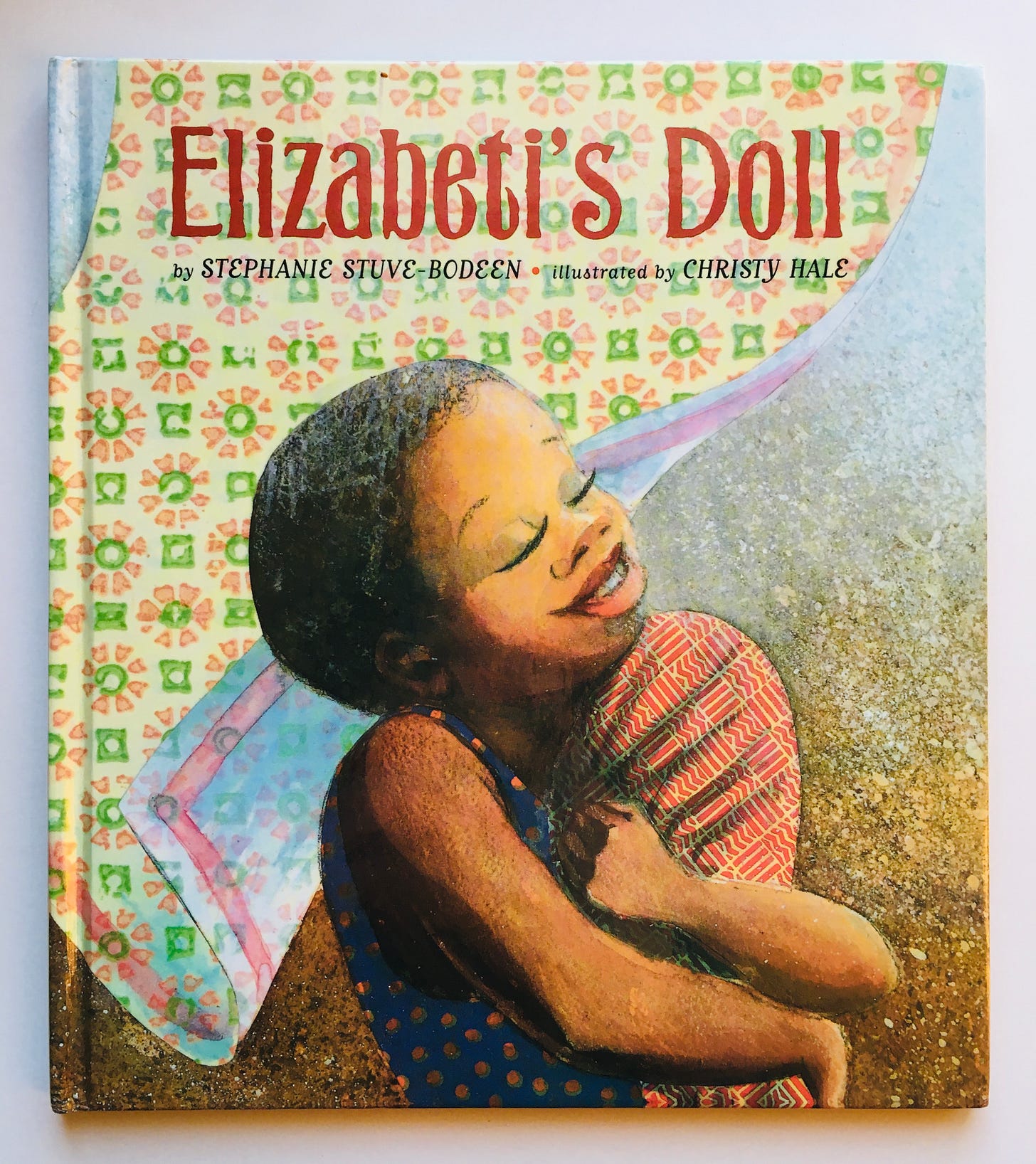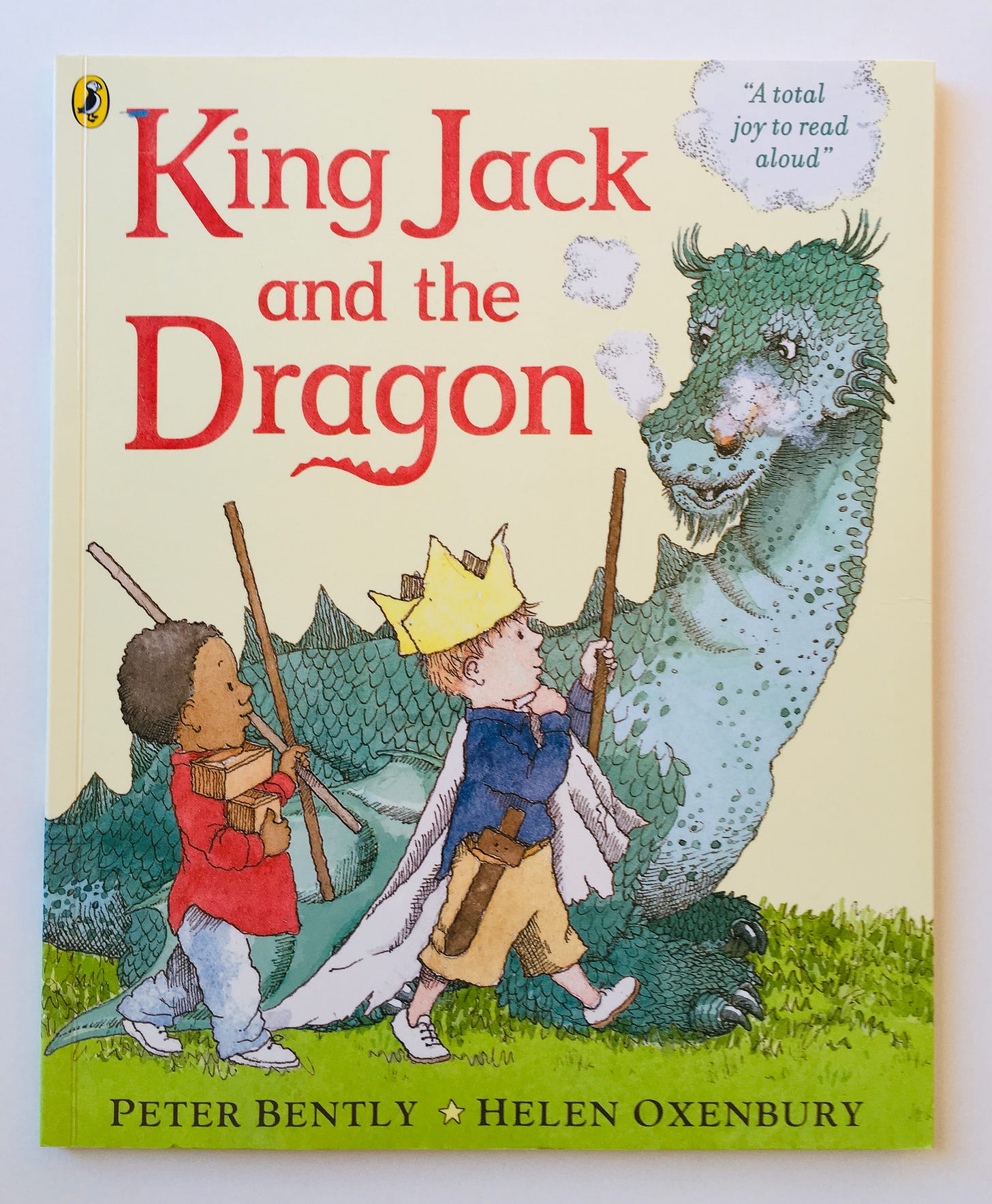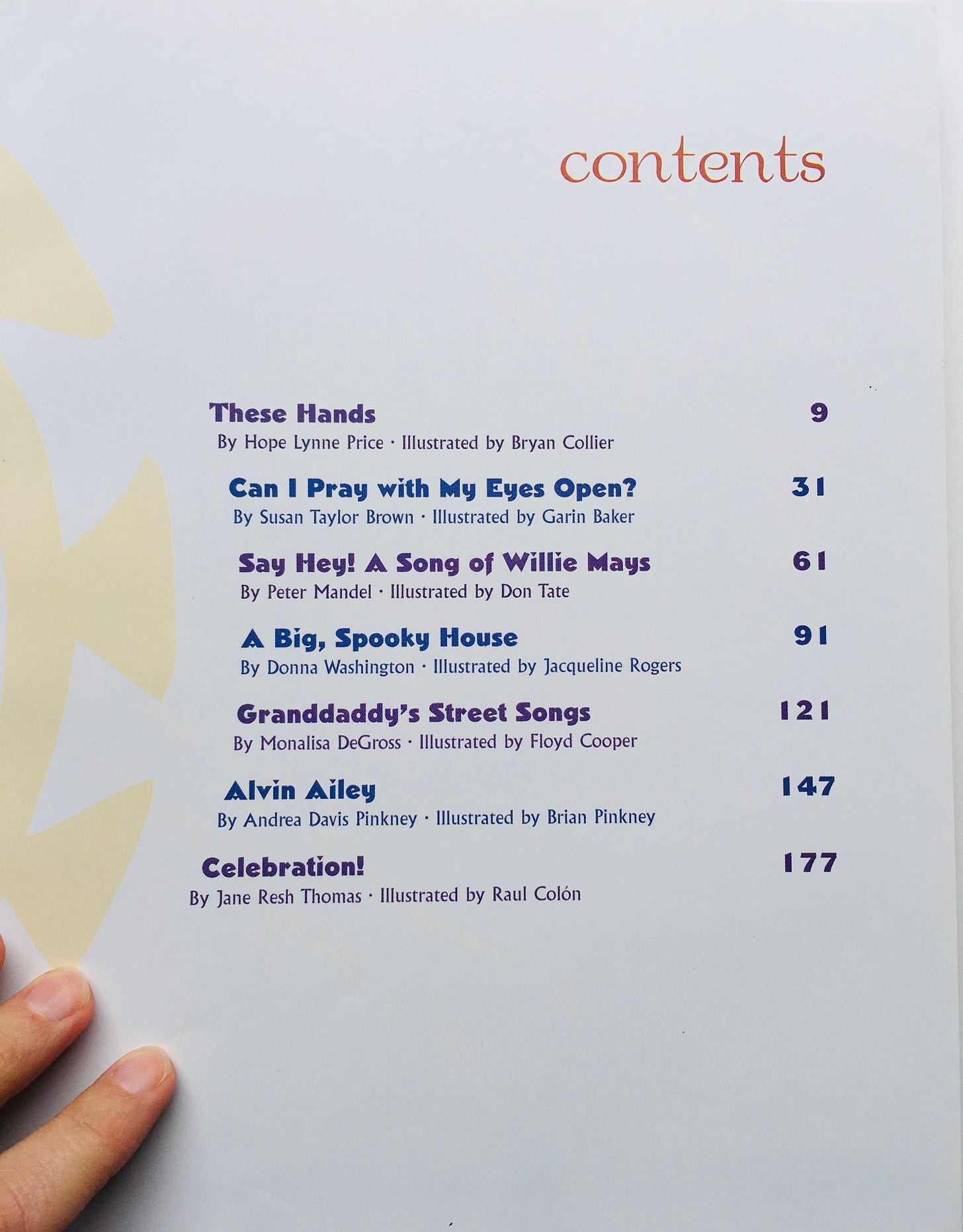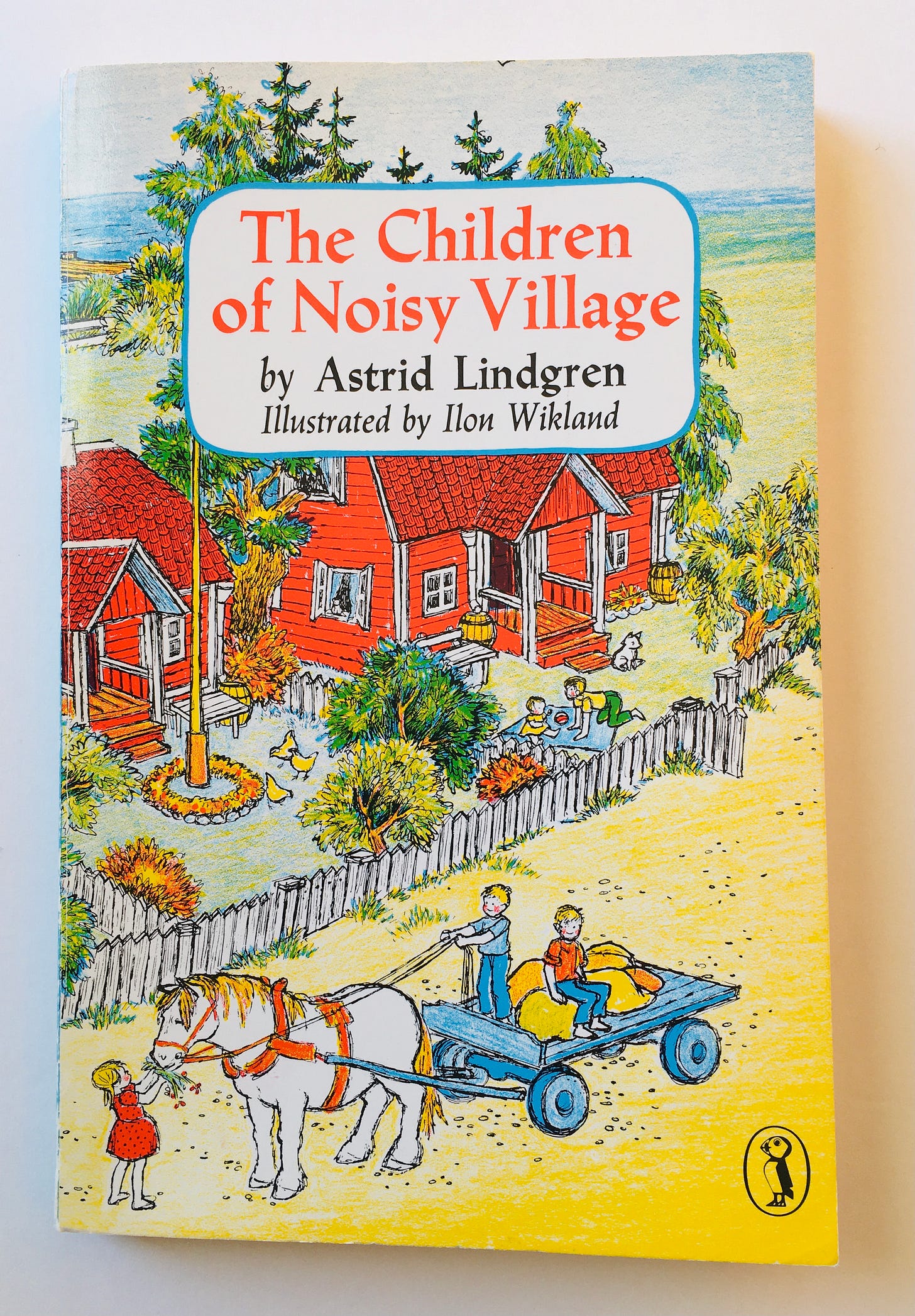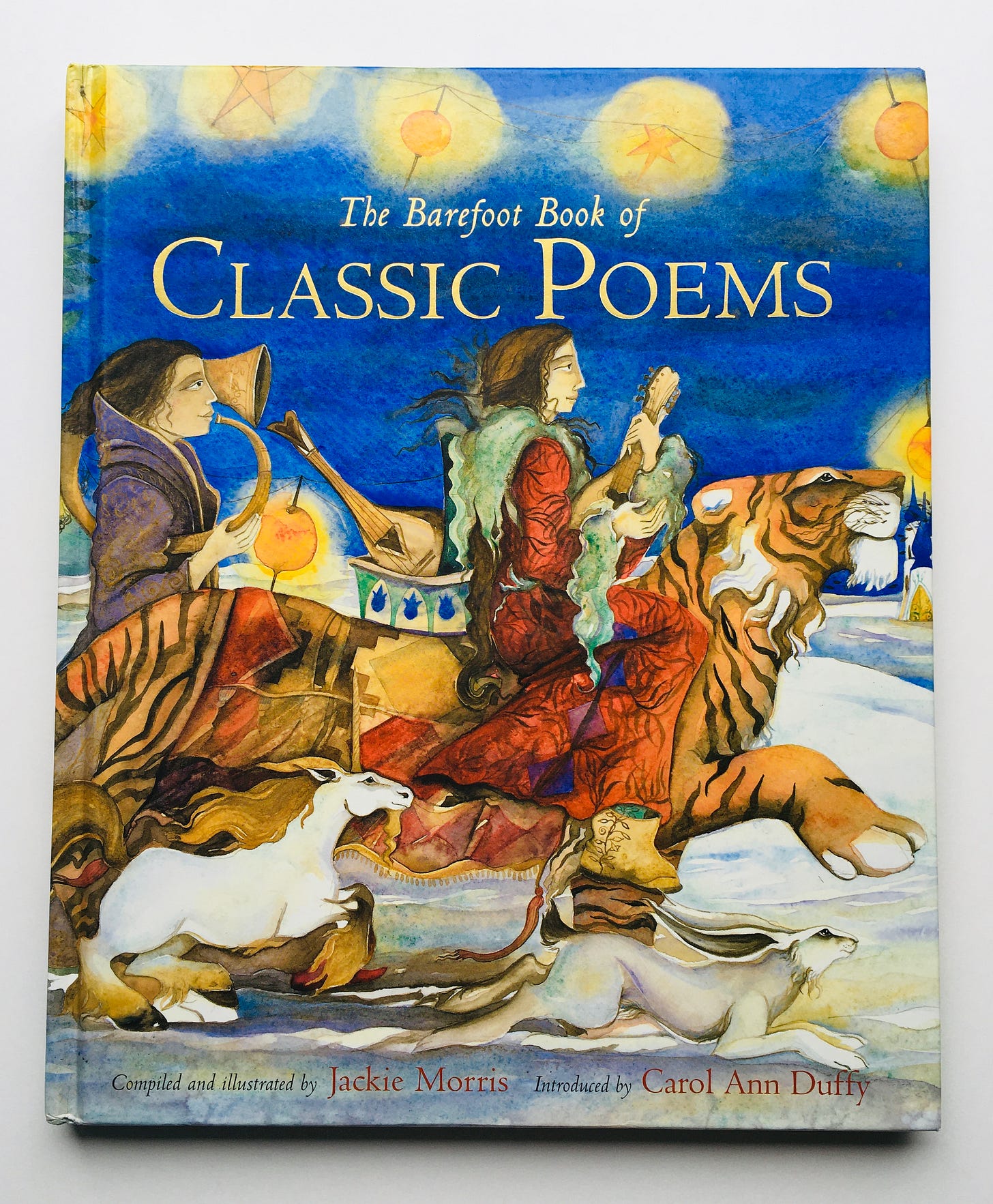Can we read? No. 29
Still subzero, still here.
Hey there. How’s it going?
We’re in day number I-don’t-know of subzero temperatures with more to go so we are in peak read-aloud mode, complete with roaring fire, wool blankets, and hot chocolate — just like an Instagram photo where you don’t see off-camera the two overflowing baskets of clean yet unfolded laundry (that have been sitting there for a week) or someone screaming because they were asked to turn off a light when leaving a room (the injustice!) or me knocking over an entire cup of green tea onto a beige footstool (do you know that green tea really stains?) I am not yet losing my mind for spring, though surely that’s coming. And I’ve finally reached “more titles than room to keep them on shelves” so last weekend I embarked on a great rearrange, which is long overdue and required, ultimately, that I create dedicated sections in various bookcases so there is some semblance of order (emphasis on “some” and “semblance”). If you missed last month’s issue of (How) Can we read?, I talked all things storage, at least half of which has now changed. So it goes. The category that appears to be growing the fastest is American history — I’ve found some amazing gems lately, especially Black history and women’s history (neither of which, incidentally, I consider separate from or different than “American history”). I had a great education and I am more widely read than your average bear and I am learning a lot all the time. (I hope I can say this always.) It’s wonderful. Probably my kids get something out of it too 🤷🏻♀️
Two things coming up: on Friday you’ll receive (How) Can we read? for February, which will be about reading routines. Then next week Wednesday, the regular issue will be the first of a two-part Spotlight On: Folk and Fairy Tales. I worked on the latter all of December, so if you are inclined to share this newsletter with someone, now is the time! They’ll be the immediate beneficiaries of my juiciest issues yet. (Thank you for this help. It really does make a difference.)
Alright, let’s do this. (Still waiting on that jumping-in-the-pool emoji.)
Elizabeti’s Doll by Stephanie Stuve-Bodeen, illustrated by Christy Hale (1998)
“Elizabeti had a new baby brother named Obedi. Elizabeti watched Mama take care of him and she wanted to care for her own baby.” The only problem is, she doesn’t have a doll, so she gets creative and finds a rock — just the right size to hold — and names it Eva. Elizabeti cares for Eva just as her mother cares for Obedi, until one day she discovers that Eva is gone. She’s deeply sad but tries to carry on, continuing with her chores, one of which is filling a pot with water and setting it on stones around the fire to boil — and that’s the moment when she recognizes one of the stones as Eva. Hale’s mixed media illustrations are warm and show various details of Elizabeti’s life in a traditional African village (in an unnamed country), and together with Stuve-Bodeen’s straightforward prose, they’ve perfectly captured that one-of-a-kind tenderness and devotion a small child is capable of showing a doll they love, which makes this an appealing book in which little ones can see something of themselves. This is a sweet, simple story, but a satisfying one that can be returned to again and again.
If this one appeals, try the follow-up titles, Mama Elizabeti and Elizabeti’s School.
King Jack and the Dragon by Peter Bently, illustrated by Helen Oxenbury (2011)
Helen Oxenbury was the first children’s book illustrator I really fell in love with — maybe because my mom read me Oxenbury’s quintessential board books (I Can, I Hear, I See, I Touch — all still as excellent as the day they were published in the early 80s) when I was teeny tiny and my heart has remembered this for decades, but maybe also because Oxenbury’s so damn good. Here her vast talent shines alongside Bently’s charming, gentle story of three little boys (two preschoolers and a toddler) and their day of imaginative play. “Jack, Zak and Caspar were making a den, a mighty great fort for King Jack and his men.” The reader follows this motley crew as they prepare to do battle and then fight dragons and beasts long into the day, until, as evening falls, some giants come to collect them one by one, and finally, “a THING with four feet!” Anyone who has ever built a fort and a whole world (and active storyline) inside it will recognize and connect with this book — it’s kind of a beautiful paean to childhood, but it’s also just pure fun (are those two things all that different, really?) As in much if not all of her work, Oxenbury makes each scene come alive through the tiniest of details — the toddler’s pacifier, the peek of “Sir Zak’s” underwear when “a giant” (his grown-up) comes to collect him, the flashlights thrown down in the grass when King Jack is embraced by his Mommy and Dad — she’s a master at this, and coupled with Bently’s lively rhyming prose, this is a masterful story. Sometimes you come across a book that’s just well done, and this is one of those books. If you have a little adventurer of any kind, don’t miss this.
If you like this one, I also recommend its sequel, which shares the same sweet spirit: Captain Jack and the Pirates.
The Jump At The Sun Treasury: An African American Picture Book Collection, various authors and illustrators (2004)
I am rarely in favor of treasuries — there are notable exceptions, of course (I reviewed James Herriot’s Treasury for Children in issue No. 22) and they are useful whenever you are long on time (waiting for something) or short on space. If you like treasuries, awesome. My beef with them is entirely physical: they are often heavy and thus difficult, even painful, to hold up while reading, and that’s for my adult hands, so I can’t imagine how it feels to children. The Jump at the Sun Treasury overcame my resistance, though, for a couple reasons: first, it’s not hard to handle; and second, it’s good. What do I mean by that? Of the seven titles it contains (see image below for the table of contents), not a single one makes me wish it had been left out. Without exception, each story is well-written and well-illustrated — some are close to poems, some are historical, one is just a good old-fashioned scary story — and there is something for everyone, from the smallest listeners with the shortest attention span (the first story, “These Hands”) to the older crowd who can listen longer (the last three). There are some heavy hitters here when it comes to illustrations — they are all different, all compelling, and hard to compare, but enjoyable whether taken alone or together. It’s rare to find a treasury that has something for everyone, but this one truly does.
The Children of Noisy Village by Astrid Lindgren (1961)
I’ve mentioned my abiding (and renewed) love for Astrid Lindgren several times lately — I find her personally fascinating and, of course, believe she contributed heartily and enormously to children’s literature, children’s chapter books specifically, which is a crowded category. So it was a bit of a no-brainer for me, when, as I was preparing our January homeschool study of Europe, I decided to pull Lindgren’s merry story of a group of Swedish children off the shelf. Rather than an actual village, “Noisy Village” is a collection of three farms right next door to one another (see cover photo), and the seven children there spend nearly every minute of the day together (including Christmas festivities of all kinds — cf. Lindgren’s picture book, Christmas in Noisy Village, which is a favorite in our house). Here the reader is treated to short, entertaining chapters (accompanied every few pages by Wikland’s sketches) about various aspects of the children’s lives — while narrated by nine-year-old Lisa, who lives at Middle Farm with her two older brothers, the tales involve all the children and cover topics like “How Olaf Got His Dog” and “Walking Home From School.” They take care of one family’s blind grandfather, have simple birthday parties, get caught in a terrible snowstorm, go crayfishing with their fathers at a nearby lake. If this sounds a little mundane, I suppose it is, but in Lindgren’s hands these small slices of Swedish childhood are brought to life in vivid, comic detail. Her chief talent, and it is not a small one, was retaining her own memories of what it was really like to be a child — and a good reminder, too, that what is prosaic to adults is often novel and engrossing for children. We read this as part of our Morning Time* in January and my children would barely let me handle another book, so eager were they to hear more about the children of Noisy Village and their hilarious exploits — for me, that’s enough of an endorsement to keep reading pretty much anything.
*More about Morning Time coming Friday in this month’s issue of (How) Can we read?
The Barefoot Book of Classic Poems compiled and illustrated by Jackie Morris (2006)
If you’re reading poetry with older kids (later elementary all the way through high school), if you’re on a budget and can only afford a few (even one) poetry collection, if you haven’t really believed me all the times I’ve said it’s important to read poetry to your children: this is the title for you. It’s chock-full of classic poets — Wordsworth, Whitman, St. Vincent Millay, Auden, Plath, Blake — and classic poems — “Jabberwocky,” “The Owl and the Pussy-cat,” “The Tyger,” “The Road Not Taken” — which makes it worth owning and reading from often (well, only if you believe knowledge of poetry is part of being culturally literate, which I absolutely do). But the great value here is Duffy’s beautiful watercolors — most of these poems are over the heads of my 4yo and 6yo (which does not preclude me from dipping into this for them, nor to them listening gladly — “reading up” is a real and valuable literacy strategy that I’ll talk about at some point in the future), but they will sit and look at this book for a long time. (I really cannot stand Yeats and yet even I am willing to read “The Stolen Child” if it means looking at a page full of women riding herons while playing violins.) This masterful combination of gorgeous words and images is breathtaking, rich — just the kind of feast the best poetry spreads.
That’s all for today. Thanks for reading, and have a good one!


